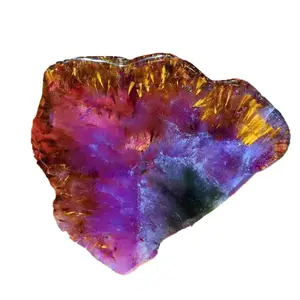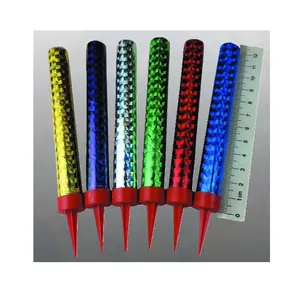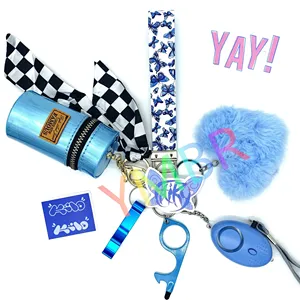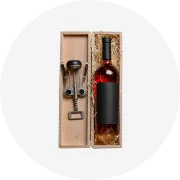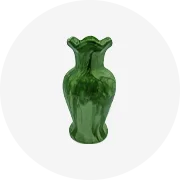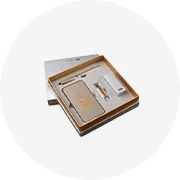Populaire dans votre secteur d’activité


Vente en gros de haute qualité robuste 6 pieds 10 pieds métal fer XXL robuste course pour animaux de compagnie extérieur grand grand chien enclos maison chenil Cage
56,79 € - 79,26 €
Commande minimale: 200 pièces
Expédition par pièce: 163,15 €






Grand chenil en plastique pliable et écologique pour chien, chenil d'extérieur pour chien
17,62 € - 47,28 €
Commande minimale: 500 pièces







Parc pour animaux de compagnie, barrières pour chiens, chenil, Cage, maison pour chiens, chat, parc d'extérieur pour animaux de compagnie, clôture pour animaux de compagnie, enclos intérieur pour animaux de compagnie
17,52 € - 27,72 €
Commande minimale: 2 pièces
Expédition par pièce: 23,74 €







Maison de chien de chenil en plastique de taille personnalisée moderne en gros
34,30 € - 50,99 €
Commande minimale: 500 pièces







XDPC Chenils en plastique bon marché pour arrière-cour Cages pour chiens Maisons pour grands chiens Outdoor Dog villa
18,54 € - 47,28 €
Commande minimale: 500 pièces







Cage de chien et chat, équipement pour clinique de vétérinaire, cinq parties, haute qualité, bon prix
741,59 € - 926,98 €
Commande minimale: 1 jeu







Chenil à nouilles instantanées lit pour chat grandes oreilles chenil rond pour chat hiver animal de compagnie petit chenil pour chien
Prêt à être expédié
4,08 € - 4,43 €
Commande minimale: 10 pièces
Expédition par pièce: 158,05 €






OUFA-Couvertures lavables pour animaux de compagnie, couverture de literie pour chat, serviettes, couvertures bon marché pour chien
1,12 € - 1,30 €
Commande minimale: 10 jeux
Expédition par pièce: 4,55 €






Offre Spéciale niche en forme de voiture pour animaux de compagnie, meubles pour chiens quatre saisons, les accessoires pour animaux peuvent être démontés et lavés
11,13 € - 12,98 €
Commande minimale: 100 pièces






Nouveau Design Maison de Chat En Peluche Chat Dormir Lit Caverne Chaud Chenil De Chien
4,23 € - 4,97 €
Commande minimale: 50 pièces






Forme de console de jeu épaissie fermée chauffante et apaisante chenil pour chat avec boule lit de grotte pour chat moderne
4,13 € - 9,38 €
Commande minimale: 5 pièces






Niche d'intérieur pour chien de luxe, personnalisée, vente en gros
3,71 € - 9,27 €
Commande minimale: 100 pièces
Recherches associées:
modèles de chenil chienchenils de noix de cajou sans coquilletable chenil chienchenils pour chiens dakotagrand chenils pour chiens fantaisiechenils couverts pour chienschenils de chien intérieurchenils chien caninchenils élevés pour chienschenils pour chiens retrieverchenils pour chienschenils fantaisie chienbelles chenils de chienchenils de chien vintagechenils pour chiens walmart






Le nouveau petit et moyen chien amovible et lavable canapé pour animaux de compagnie chenil chat chenil Massage orthopédique chenil fonctionnel
Prêt à être expédié
12,05 € - 13,63 €
Commande minimale: 10 pièces
Expédition par pièce: 57,75 €





Laine lit pour animaux de compagnie doux respirant Animal chenil fabricant écologique Polyester coton chine Zhejiang Logo personnalisé chiens
1,77 € - 4,87 €
Commande minimale: 10 pièces






Lit rond pour animaux de compagnie avec oreiller pour chat ou chien, chenil préféré, meilleure vente en usine
Prêt à être expédié
4,42 € - 9,71 €
Commande minimale: 1 pièce
Expédition par pièce: 47,48 €






Chenil rond en rotin tissé Semi-fermé pour chat, housses remplaçables, fait à la main, classiques, pour animaux domestiques, lit de Villa, pour chiens et chats
11,13 € - 12,06 €
Commande minimale: 100 pièces






Tapis de litière rond épaissi moelleux pour animaux de compagnie chenil pour chat de sommeil profond chenil pour chien de petite et moyenne taille disponible
2,23 € - 9,46 €
Commande minimale: 500 pièces
Expédition par pièce: 8,14 €






Toutes les Saisons Tapis Chien Lit Pour Animaux De Compagnie Meilleur Confort Coussin de Soins Sommeil Rond Personnalisé En Gros Artisanat Lits Maison Chenil
Prêt à être expédié
2,88 € - 8,16 €
Commande minimale: 1 pièce
Expédition par pièce: 50,22 €






Automne-hiver chaud et doux sommeil profond coussin rond pour chien lit en velours PV pour chiens fournitures pour animaux de compagnie en gros chenil
2,79 € - 12,97 €
Commande minimale: 100 pièces






Canapé de luxe pliable pour animaux de compagnie, Logo personnalisé OEM, chenil de lit pour chien, grand tapis, promotion, gris, vente en gros
Prêt à être expédié
1,84 € - 4,62 €
Commande minimale: 5 pièces
Expédition par pièce: 14,23 €






Niche d'extérieur avec cour, maison pour chien en bois imperméable à la pluie, maison d'extérieur pour grand chien, maison pour animaux de compagnie en bois massif
107,42 € - 999,47 €
Commande minimale: 10 pièces






Niche triangulaire pour animaux de compagnie, de haute qualité, lit chaud, semi-fermé, pour chiens et chats
2,65 € - 5,47 €
Commande minimale: 3 pièces






HAOJI — chenil pour chien de haute qualité, disponible dans différentes tailles, doux et confortable, vente en gros, nouvelle collection 2020
3,43 € - 3,90 €
Commande minimale: 100 pièces






Housse rectangulaire en tissu Super doux, pour lit pour chien, coussin de canapé, confortable, grande taille, pour animal de compagnie, vente en gros, nouveauté 2021
0,3245 € - 1,07 €
Commande minimale: 100 pièces






Chenil rond amovible et lavable pour chien, lavable, en peluche, pour chats et animaux domestiques, produits chauds
Prêt à être expédié
1,94 € - 11,59 €
Commande minimale: 20 pièces
Expédition par pièce: 7,50 €






Vente chaude perle coton automne hiver réchauffement sommeil profond et douce nuit chien lit chenils, produits pour animaux de compagnie chaud 2021
1,77 € - 8,41 €
Commande minimale: 50 pièces





Voiture de luxe pour animaux, niche, chaude et confortable, avec chiens de voyage, imperméable, nouveauté,
Prêt à être expédié
14,22 € - 14,58 €
Commande minimale: 10 pièces
Expédition par pièce: 57,04 €






Chenil rond chaud en peluche pour animaux de compagnie, pour chats et chiens, de couleur blanche, Semi-fermé, pour garder au chaud et en hiver
1,86 € - 5,80 €
Commande minimale: 100 pièces






Lit pour animal de compagnie, niche rectangulaire, amovible et lavable, en tissu plaid, pour chiens et chats
Prêt à être expédié
5,10 € - 8,63 €
Commande minimale: 2 pièces
Expédition par pièce: 17,15 €






MOFESIPI Lit de plage en bois massif pliable et durable pour animaux de compagnie pouvant être démonté et lavé
Prêt à être expédié
5,18 € - 6,03 €
Commande minimale: 5 pièces
Expédition par pièce: 36,24 €






Lit en forme de patte d'ours pour chien, maison pour petit chien, lit pour chat, lavable, lit pour Animal de compagnie, coussin en peluche douce pour chenil en peluche
7,88 € - 16,23 €
Commande minimale: 10 pièces






INS Hot Pet canapé-lit pour chien et chat détachable hiver chaud chien lits lavables lits pour animaux de compagnie chenils d'intérieur pour chiens
15,65 € - 28,06 €
Commande minimale: 50 pièces
Expédition par pièce: 4,73 €





Niche de voiture mignonne, pour chien, avec siège de sécurité, lit pour animaux de compagnie
92,69 € - 97,33 €
Commande minimale: 5 pièces






Tapis de nid en forme d'alcopa pour chat, nid chaud d'hiver avec boule suspendue, chenil pour chien
6,67 € - 6,96 €
Commande minimale: 10 pièces





Chenil extérieur personnalisé pour animaux de compagnie, grand chenil extérieur étanche pour chats, cage pour animaux de compagnie en bois
9,27 € - 25,96 €
Commande minimale: 5 pièces
Expédition par pièce: 38,75 €






Siège pour animal de compagnie chenil pour chat chenil pour chien fournitures pour animaux de compagnie coussin chenil de voiture à siège unique
10,15 € - 11,30 €
Commande minimale: 100 pièces






Personnalisé toutes les tailles en peluche chat lit chenil doux
1,67 € - 3,34 €
Commande minimale: 1000 pièces
Meilleures catégories
Concernant images chenils pour chiens
Accédez de haute qualité, époustouflant et incroyable. images chenils pour chiens sur Alibaba.com pour tous les types de décoration intérieure. Ces produits fantastiques et élégants sont de qualité durable et sont idéaux pour les décorations et les cadeaux pour tous les types d'occasions. Ces merveilleux. images chenils pour chiens sont disponibles en différentes variétés et sont connus pour être très résistants à tous les types d'usure. Achetez ces merveilleux. images chenils pour chiens des principaux fournisseurs et fabricants sur le site pour les prix les plus abordables et de haute qualité.
La collection massive de. Le images chenils pour chiens disponible sur le site est composé de matériaux de qualité pure qui sont durables dans la nature et ont une plus grande durabilité envers toutes sortes de résistances. Ces produits sont conçus avec des moules artificiels avancés pour une forme meilleure et précise, définissant de véritables œuvres d'art. Le. Les images chenils pour chiens sont non seulement idéaux pour les décorations intérieures, mais aussi pour les belles décorations extérieures. La qualité de la couleur est très rigide et dure longtemps. Celles-ci. images chenils pour chiens sont des produits écologiques et sont également parfaits pour le bricolage.
Alibaba.com propose des gammes fascinantes de. images chenils pour chiens dans des formes, tailles, couleurs, matériaux, textures et autres aspects variés pour répondre à vos besoins. Les produits sont équipés de nombreux traits de qualité tels que la résistance à la température et les fonctionnalités anti-poussière et peuvent s'intégrer dans tout type de thème de décoration. Divers animaux, de forme humaine, abstrait. images chenils pour chiens sont disponibles sur le site pour de splendides décorations. Celles-ci. images chenils pour chiens sont également disponibles dans des options personnalisées en fonction de vos préférences.
Sur Alibaba.com, vous pouvez sélectionner une large gamme de. images chenils pour chiens qui correspondent à votre budget et à vos exigences. Ces produits sont certifiés ISO, CE, ROHS et disponibles en tant que commandes OEM. Ces produits sont également disponibles avec des emballages personnalisés.
La collection massive de. Le images chenils pour chiens disponible sur le site est composé de matériaux de qualité pure qui sont durables dans la nature et ont une plus grande durabilité envers toutes sortes de résistances. Ces produits sont conçus avec des moules artificiels avancés pour une forme meilleure et précise, définissant de véritables œuvres d'art. Le. Les images chenils pour chiens sont non seulement idéaux pour les décorations intérieures, mais aussi pour les belles décorations extérieures. La qualité de la couleur est très rigide et dure longtemps. Celles-ci. images chenils pour chiens sont des produits écologiques et sont également parfaits pour le bricolage.
Alibaba.com propose des gammes fascinantes de. images chenils pour chiens dans des formes, tailles, couleurs, matériaux, textures et autres aspects variés pour répondre à vos besoins. Les produits sont équipés de nombreux traits de qualité tels que la résistance à la température et les fonctionnalités anti-poussière et peuvent s'intégrer dans tout type de thème de décoration. Divers animaux, de forme humaine, abstrait. images chenils pour chiens sont disponibles sur le site pour de splendides décorations. Celles-ci. images chenils pour chiens sont également disponibles dans des options personnalisées en fonction de vos préférences.
Sur Alibaba.com, vous pouvez sélectionner une large gamme de. images chenils pour chiens qui correspondent à votre budget et à vos exigences. Ces produits sont certifiés ISO, CE, ROHS et disponibles en tant que commandes OEM. Ces produits sont également disponibles avec des emballages personnalisés.

